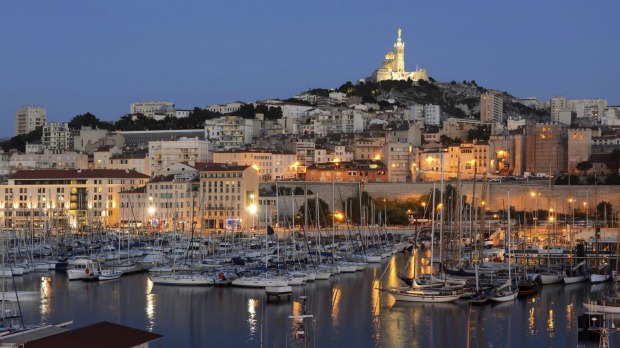
They are the meanest streets in the world. Cities that feature in nightly news bulletins rather than double-page spreads. Places where dangers lurk on every corner. Bombs. Assassinations. Crime and poverty. Even for the intrepid traveller, these places are way off the itinerary.
Except ... cities are living things. They grow, they change, and often, they improve. Sometimes, the world notices. More often, it doesn't. Cleaner streets and falling crime rates don't make headlines in the same way as assassinations and piles of garbage in the streets do.
The cities on this list have had a bad rap for too long. Some are destinations that you may have tried once and written off. If, for instance, your most vivid memory of Delhi is the snarled, smelly, stagnant traffic, you will be thrilled by the clean, efficient metro which puts many global cities to shame.
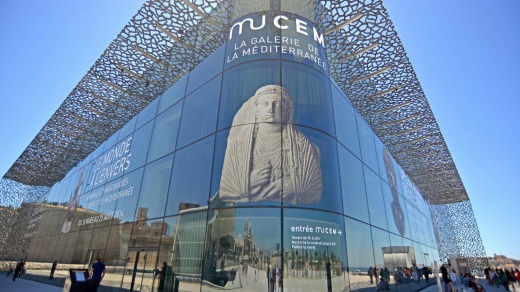
Other cities, long considered no-go zones, have been doing some under-the-radar reinvention. Tehran's streets are now filled with chic cafes and friendly people rather than chanting mobs. Medellin, no longer the murder capital of the world, is receiving recognition for its innovative urban initiatives and cutting-edge architecture.
So give one of these outside-the-square destinations a try: we promise it will be eye-opening.
The reputation As the site of the "Bloody Sunday" massacre, many still associate Derry with its troubled past.
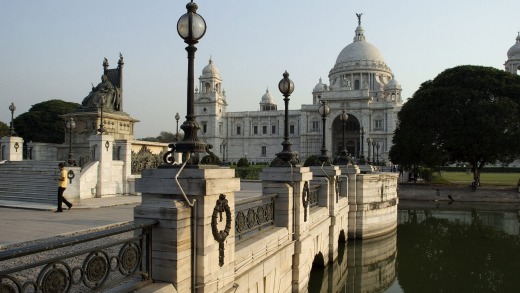
The reality With the introduction of the Peace Bridge, a pedestrian-only link between the traditionally unionist Waterside and nationalist Cityside of the Foyle River, Derry has taken a huge step towards lasting peace. This once-troubled city is now one of the friendliest and safest to visit.
Don't miss Take a walk along Derry's 17th century city walls . Have a pint of Guinness and listen to local musicians at Peadar O'Donnell's. Visit the impressive Tower Museum to learn about Derry's history .
Do avoid There's a slim chance of violence around August 12, when the Apprentice Boys of Derry parade through the city streets.
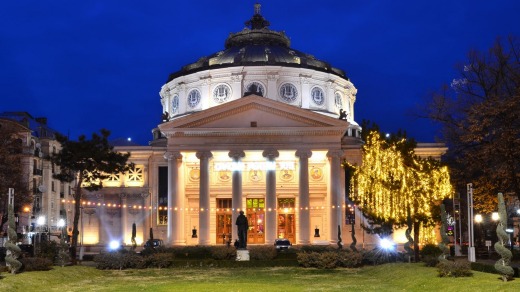
More on Northern Ireland
- Ben Groundwater
The reputation An intimidating megalopolis of drug runners and cartels.
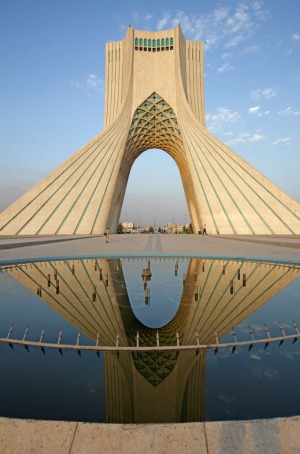
The reality With a few safety precautions, Mexico City still has the power to charm. From its artistic brilliance – check out Diego Rivera's murals at the Palacio de Bellas Artes, or Frida Kahlo's works at her former home – to its thriving culinary scene, there's much to love about "the DF".
Don't miss Sip cocktails on the rooftop of the fancy Condesa DF Hotel . See live "lucha libre" wrestling at Arena Mexico . Spend a day soaking up the atmosphere in the "Zocalo" . See smartraveller.gov.au
Do avoid Walking alone at night, and book your taxi rather than hail one on the street.
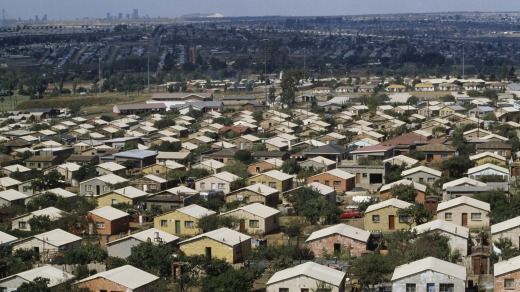
More on Mexico City
- BG
The reputation Mad, bad and dangerous, drug-and-mug capital of Europe.
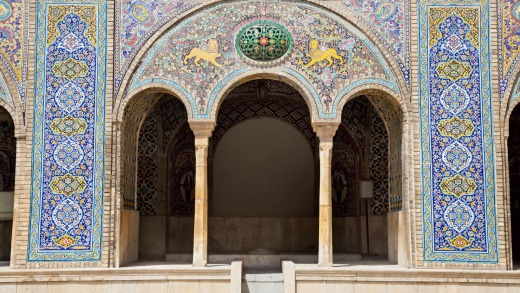
The reality I'm kidding, right? Marseille? What right-minded individual would even think of visiting France's second largest city and biggest port, one giant unlovely urban horror ringed by an industrial wasteland? Well hold it right there: Marseille is undergoing a renaissance. In the ramp-up to Marseille's year in the sun as European Capital of Culture in 2013, the French government chucked €7bn in regeneration funds at the city, most of it invested along the waterfront in arts centres, apartment blocks, offices and shopping centres. Signs of renewal are everywhere, from the 17th-century Fort Saint Jean, formerly a barracks for the Foreign Legion and now remodelled to become part of the city's Museum of European and Mediterranean Civilisations, to the quayside, where Norman Foster has created Ombriere, a giant sunshade with a mirror-finish underside that offers an upside-down view of the world below.
The paradigm of ugly duckling to swan doesn't quite work. Cinderella's glass slipper would never fit Marseille's horny foot. Yet this is also its saving. The facelift has not erased the wrinkles that make Marseille what it is - a gritty, passionate, ethnically diverse, blue-collar city populated by gregarious people who like to eat, drink and laugh.
The Vieux Port is where Marseille traces its roots, to the trading settlement founded 2600 years ago by Greek settlers. The café-lined quais overlooking see-sawing boats is an essential stop, and don't miss the daily fish market on Quai des Belges. It was in this city that bouillabaisse was born.
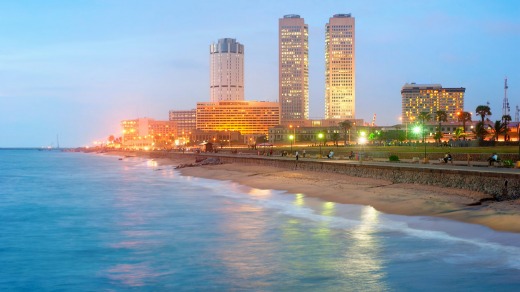
Rising from the north side of the port, Le Panier is the city's oldest neighbourhood, a maze of streets and now home to artists, architects and designers. Take in the ochre-washed facades of place des Moulins then plunge into the labyrinth that leads to the Centre de la Vieille Charité, a 17th-century poorhouse and a cloistered delight, housing two of the city's leading museums.
Don't miss Lunch at Café Populaire, a chic rue Paradis bistro. Take a ferry to Chateau d'If, the 16th-century prison fortress and inspiration for Alexandre Dumas' Count of Monte Cristo. See frioul-if-express.com
Do avoid The Vieux Port area at night, frequently the scene of robberies, some violent. Dress down, and carry only whatever small amount of cash you might need. Solo women are sometimes targeted.
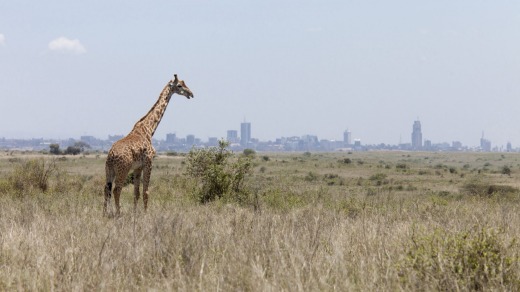
More on France
- Michael Gebicki
The reputation The former hometown of drug kingpin Pablo Escobar is ridden with violence.
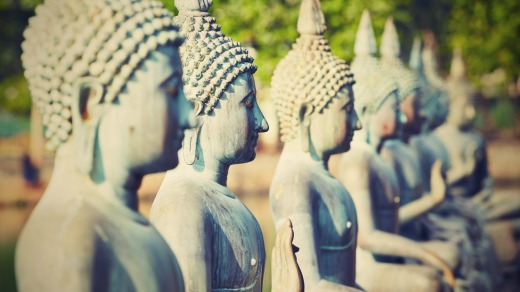
The reality Like much of Colombia, Medellin is drastically misunderstood. Yes, this was once the homicide capital of South America, but the city has cleaned itself up, becoming a vibrant, welcoming place for travellers. Medellin's Metrocable – a gondola system running above the suburbs – provides a great way to see the city.
Don't miss The Fernando Botero sculptures at the Museo de Antioquia . Ride the city's two cablecar routes for an aerial view of the "real" Medellin . Spend a night eating, drinking and dancing with locals in Parque Lleras . See smartraveller.gov.au
Do avoid Some of the poorer neighbourhoods of Medellin are still unsafe for visitors – listen to locals' advice.

More on Colombia
- BG
The reputation A dirty, unpleasant seat of Mafia power that's a pickpocket's paradise.
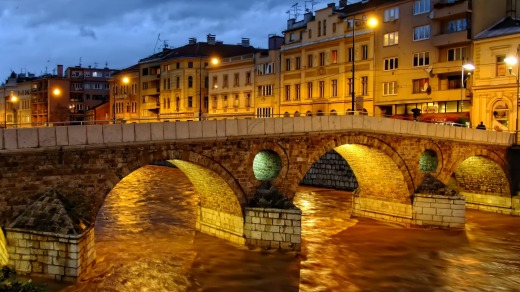
The reality Naples is fun. It might be ramshackle and dirty, but therein lies its attraction – this is a friendly place with no pretension. The Campagnian capital also houses one of Italy's best museums, the National Archeological Museum, and is the birthplace of pizza.
Don't miss Order the margherita from one of Naples' finest pizzerias, Da Michele . Wander the cobbled streets of the Centro Storico . Sample sfogliatella, the Neapolitan pastry filled with sweet ricotta.
Do avoid While the historic centre is safe, some of outer suburbs are best avoided at night.
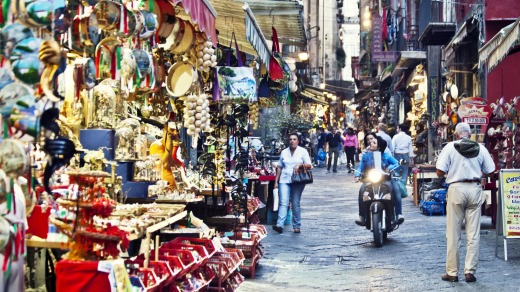
More on Naples
- BG
The reputation Frequently listed among the world's most unlivable cities, Tehran is cramped and polluted, with terrible traffic problems, and boasts the small issue, for visitors, of being one of the seats of the Axis of Evil.
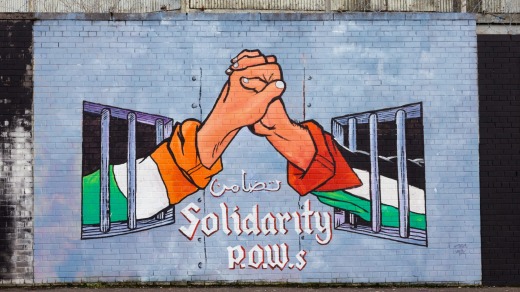
The reality Tehran is not evil. It's cramped, it really is polluted, the traffic is hair-raising and you will see the odd piece of anti-US propaganda slapped across a wall – but evil it is not. In fact it's very much the opposite.
From the moment I arrived in Tehran unsure what to expect, unable to separate reputation from reality, I felt safe and welcome. The taxi driver from the airport offered me those exact sentiments. The hotel manager offered me tea.
It's intimidating when you take your first steps on the Tehrani streets, realising you'll have to take mad dashes through that traffic to cross the road, realising you know nothing of what to expect from this possibly dangerous place.
Tehranis, to begin with, don't seem as friendly as their neighbours in Esfahan. But don't let the government propaganda fool you: there's nothing to fear here.
This is a city that's surprisingly cosmopolitan, where hip young couples smoke and sip coffee in arty little cafes like Jeanne d'Arc, and stylish women with headscarves shop up a storm in upmarket northern suburbs. It's also an ancient city, with a labyrinthine bazaar, and the beautifully decorated Golestan Palace, as well as an extensive network of museums and art galleries.
English is widely spoken. The locals are open, generous. Given half a chance, most Tehranis will invite you to share tea with them, or even come home to share a meal. One taste of Persian food and you'll realise that's not an offer you should turn down.
Yes, the traffic in Tehran is bad – but you can put up with it to experience a vibrant city such as this.
Don't miss The breathtaking Mirror Hall in Golestan Palace is almost worth the trip to Tehran alone . The Treasury of the National Jewels houses some of the most impressive rocks around, including the world's largest uncut ruby, and the Darya-e-Noor diamond . Check out the anti-US murals on the walls of the former US Embassy – they'll seem laughable after the warm welcome you'll receive from locals . See smartraveller.gov.au
Do avoid The most dangerous situation in which you're likely to find yourself in Tehran is crossing the road – follow the locals' lead and cross where they do.
More on Iran
- BG
The reputation The name "Nairobbery" says it all – this is known as a city rife with crime.
The reality Nairobi is dangerous. Crime remains a major issue in the city; however, with a few precautions Nairobi can and should be enjoyed by tourists, not least because of its varied restaurants, world-class museums, and Nairobi National Park – a very accessibly place to view game.
Don't miss Sample ostrich and crocodile meat at the Carnivore Steakhouse . See cultural and natural exhibits at the National Museum . Spot wild lion, cheetah, hippo and rhino in Nairobi National Park . See smartraveller.gov.au
Do avoid Don't walk around town alone, particularly at night, and don't use local "matatus", or share taxis.
More on Kenya
- BG
The reputation Beset with beggars and nightmarish traffic, and between them, the city's scam artists and lurking infections will empty your pockets and possibly your bowels.
The reality It's mysterious and magical with a tincture of risk. Step off Chandi Chowk into the knotted back lanes of Old Delhi and you're in a medieval swirl of tiny open-fronted shops, dodging the fiery cauldrons of samosa sellers and jalebi makers and assaulted by intoxicating smells with the towering minarets of Shah Jahan's Red Mosque as a backdrop.
Don't miss Swaminarayan Akshardham (akshardham.com), a Hindu temple set in lush gardens, at its best in the evening for the Water Show. Lodi Gardens, a green oasis surrounding the domed tombs of the Lodhi dynasty close to the diplomatic quarter.
Dinner at Karim's, legendary Mughal food with atmosphere you could carve, packed into a tiny courtyard in Old Delhi. karimhoteldelhi.com. See smartraveller.gov.au; delhitourism.gov.in
Do avoid Watch out for pickpockets and scams in popular tourist areas such as Chandi Chowk, Connaught Circus and Janpath. Female travellers, especially those travelling alone, should pay particular care to their safety.
More on Delhi
- MG
The reputation Rough, tough and dour, the world capital of glassing.
The reality This city's got soul. Energetic and edgy, Glasgow hosts an incendiary music scene, hipster bars and a cityscape that juggles the glorious Arts and Crafts works of Charles Rennie Mackintosh with sharp-edged modernism. It's the people who make it, friendly to a fault, with a wicked sense of humour.
Don't miss Kelvingrove Art Gallery and Museum , a Spanish-baroque stately pile and home to works of Dali and Rembrandt as well as ethnographic curios. The Willow Tearooms , a Glaswegian institution, designed by Charles Rennie Mackintosh. The Necropolis , final resting place of the worthy and well-to-do, brilliantly moody and stuffed with Victorian statuary and mausoleums. See peoplemakeglasgow.com
Do avoid Fringe areas of the city are a potential danger zone but at its heart Glasgow is mostly safe and sane. Stick to the city centre, avoid quiet streets by night and don't talk to crazy people.
More on Glasgow
- MG
The reputation Siege city, all but destroyed during a three-year siege in the Balkans War.
The reality So much beauty, so much horror. On a sunny summer day, Sarajevo's location is utterly gorgeous, the snow-capped mountains ringing the verdant valley providing the town with a spectacular backdrop. For those old enough to remember the 1990s Balkan war, however, the mountains carry more ominous connotations. It was from these peaks that the Serbs relentlessly shelled the city in a siege lasting three years, almost starving its citizens into submission.
The siege of Sarajevo resonated throughout the world not just because it played out on our TV screens, but because this city, swept up in ethnic hatreds, had for centuries been a harmonious crossroads between East and West. Even today, after the massive population shifts that followed the war, its multicultural legacy endures. The largely-restored skyline is punctuated by church spires as well as minarets, and the local cafes offer both hookah pipes and short blacks.
A walk through Sarajevo reveals beauty at every turn. Along the cobblestoned streets, art nouveau buildings and neoclassical houses alternate with 500-year-old caravanserais built to provide shelter for journeying merchants. Magnificent buildings such as the grandly furnished Svrzo House and the gorgeously Moorish Vijećnica, at various times the city's town hall and its library, are further reminders of the centuries when this city was proud and prosperous. The old town's bazaar still ebbs and flows to ancient rhythms, while artisans working in small studios offer everything from handmade shoes to silver filigree jewellery.
Yet sadness, like bullet holes, is ubiquitous in this city. The icily pretty Alpine river tumbles its way beneath low bridges, each of which has its own sad tale. The Latin Bridge is where Archduke Franz Ferdinand was assassinated, precipitating World War I; on the Romeo and Juliet bridge, two young lovers, the Serbian Bosko and the Bosniak Admira, were shot by a sniper during the siege. Hikers who head out to explore the scenic foothills pass endless ranks of white marble posts, traditional Muslim burial markers. A visit to the Sarajevo Tunnel, the city's lifeline during the siege, is a must-do, and a welcome reminder of the resilience of the local people. In a country where the unemployment rate remains at 45 per cent, the need for resilience has not yet passed.
Don't miss Old Sarajevo with its lively bazaar; a stroll along the riverfront; a visit to the Tunnel Museum. See sarajevo.ba/en, smartraveller.gov.au
Do avoid Bikers and hikers love exploring the landscapes outside Sarajevo, but be aware that plenty of unexploded landmines lie in the open countryside. Stick to well-marked paths, and avoid abandoned buildings.
- Ute Junker
More on Bosnia-Herzegovina
The reputation Battered, traffic-choked, crime-ridden Mafia stronghold.
The reality Unchecked Mafia crime is long gone in Sicily's capital. Behind the grime, Palermo boasts grand baroque palazzi, gorgeous churches and fine street markets – plus the world's best gelato.
Don't miss Sicily's 11th-century Arab-Norman fusion created the exquisite Palatine Chapel and treasures of La Zisa palace-museum. Embalmed corpses of 18th-century Palermo notables stand in the macabre Capuchin Monastery. See provincia.palermo.it
Do avoid Bag-snatching from motor scooters is common, so abandon long-strapped bags and keep an eye out. Avoid the Kalsa and Cassaro districts at night.
More on Italy
- Brian Johnston
The reputation Bomb-ridden Northern Irish capital, divided by sectarian violence and no-go zones.
The reality The end of "The Troubles" brought a startling transformation to the elegant Victorian-era city centre, which features historic pubs, fine-dining restaurants and reinvigorated shopping districts.
Don't miss Wander the city centre, Donegall Place shops and the historic University Quarter. Titanic Belfast charts the story of the famous ship, built in the adjacent dockyards . The murals of the once notorious Falls and Shankill roads are interesting. See visit-belfast.com
Do avoid Tensions escalate on certain anniversaries such as July 4, so stay informed.
More on Northern Ireland
- BJ
The reputation Bestselling 1985 novel The City of Joy and the fame of Mother Teresa reinforce perceptions of Kolkata as a chaotic, poverty-ridden city mired in slums and on the verge of collapse.
The reality Calcutta became the capital of an emerging British India in 1757 and grew steadily grander. It has magnificent public buildings and elegant squares dotted with vice-regal statues. In the past two decades, things have been steadily improving, with a program of public works and the renovation of its flamboyant historic buildings.
Modern Kolkata is worth seeing too, with its hip shopping malls and fashion boutiques - you'll find many of the latter under one roof at 85 Landsdowne Road. The city is also one of India's cultural and intellectual capitals. Visit the museum dedicated to Nobel Prize winner Rabindranath Tagore , the Oxford Bookstore , and art exhibitions at Birla Academy of Art and Culture or the Centre for International Modern Art . Watching a Bollywood movie with an excitable local audience is quite the cultural experience.
Overall, Kolkata is for soaking up the atmosphere rather than seeing the sights. One of the world's biggest cities, Kolkata is designed for one-fifth of its current 14 million inhabitants. True, it teeters on the edge of anarchy: streets run like rivers during the monsoon, buses seem held together by wire and string, slums erupt beneath office blocks, colonial monuments crumble away. Yet somehow the city holds together, and its human energy, constant motion and irrepressible friendliness give it a magnificent sense of street theatre.
Don't miss The 1767 Park Street Cemetery and the memorial plaques in St Paul's Cathedral, sad testament to the hardships of life for the colonial British in India. The Asiatic Society has a fine reading room and collection of imperial coins and European paintings. The vast marble Victoria Memorial , commemorating a dumpy Englishwoman who never set foot in India, curiously remains the pride of the city.
The rambling Indian Museum is jammed with coins, Tibetan art, bronzes, moth-eaten stuffed animals and sculptures. The 1835 Marble Palace, stuffed with Asian and European antiques and paintings, presents the lush life of a wealthy local landowner.
It's worth travelling into the suburbs at Shibpur to see the bird-haunted Botanical Gardens , notable for their banyan trees and orchid and palm houses. Kalighat is the city's pre-eminent temple, always an eye-popping frenzy of activity (avoid mornings, when goats are slaughtered). Surrounding lanes are bright with flower markets. See westbengaltourism.gov.in, smartraveller.gov.au
Do avoid The drug dealers of backpacker haunt Sudder Street, and the red-light district of Sonagachi, where police disapprove of the presence of foreigners. Begging and petty scams are rife but seldom physically threatening. Avoid the monsoon season, when flooding is common.
More on Kolkata
- BJ
The reputation Riven with ethnic unrest and one of the most dangerous places in China.
The reality Riven with ethnic unrest and possibly one of the most dangerous places in China, Urumqi, home to the Uyghur race, is also the furthest major inland city from an ocean and start of the Silk Road in earnest before it heads from China and into the Stans.
Don't miss The seething Islamic Grand Bazaar area, an exotic Uyghur marketplace, is a must, even though its feature is a Han Chinese rip-off of the World Heritage-listed Kalyan minaret in Bukhara, Uzbekistan. See smartraveller.gov.au
Do avoid Most visitors tend to travel to and/or through Urumqi as part of organised group tours but if you head off alone conceal your valuables or leave them at the hotel and do eschew protests or any large gatherings that could turn volatile.
- Anthony Dennis
More on China
The reputation Tour operators have traditionally bypassed Colombo (save for its international airport) on their itineraries, believing it to be of little interest.
The reality Funds from a multibillion-dollar World Bank loan have been poured into a massive urban revitalisation project designed to transform Colombo into a major south Asia destination, including a new state-of-the-art port area. Several major colonial buildings have been sensitively restored including the 17th-century Dutch Hospital , which has been turned into a restaurant and retail complex in the lively Fort area.
Don't miss One of Asia's great colonial-era hotels, the Galle Face Hotel , is nearing completion of the way overdue restoration of its North Wing, dating to 1864, while its South Wing remains open to receive house guests. Adjacent to the hotel is Galle Face Green, a five-hectare seaside public park which comes alive at dusk – perfect for a promenading stroll. See smartraveller.gov.au
Do avoid Colombo is a significantly safer city since the end of the civil war but it's wise to keep valuables out of sight and beware of all belongings.
More on Colombo
- AD
The reputation A grimy, decrepit northern England city best avoided in favour of somewhat more attractive destinations such as York, Manchester and Liverpool.
The reality Leeds, which is only 20 minutes by train from the admittedly lovely York, is overlooked by travellers. But its self-styled epithet as the "Knightsbridge of the North" is not hyperbolic. The original home of Marks & Spencer, Leeds' is blessed with a delightful, compact shopping precinct, the Victoria Quarter, which includes the beautifully preserved Grand Arcade and the Corn Exchange.
Don't miss Trinity Leeds is a stylish, exceptionally well-designed new contemporary shopping centre with some of the best shops and restaurants in northern England. Leeds is also home to a Marks & Spencer heritage trail tour which begins at Kirkgate Market, where the company started well over a century year ago. See visitbritain.com; visitleeds.co.uk
Do avoid Leeds is as safe as any other major city in England though locals do tend to recommend that visitors avoid areas such as Chapeltown and Halton Moor.
More on England
- AD
The reputation Dreary communist capital of strongman Nicolae Ceaușescu, with more than its fair share of sad orphanages, plagues of pickpockets and gypsy scammers.
The reality True, Bucharest is dotted with hideous communist monstrosities (most notably its infamous parliament, one of the world's largest buildings), but its wide boulevards were inspired by Paris, and the elegant avenue Calea Victoriei is a Belle Epoque gem. Bucharest also has lovely churches and monasteries, and 18th- and 19th-century civic buildings that add history and elegance. Many old buildings are being restored. The Romanian capital also has fine museums, pleasant parks and good cafés.
Romania has a young population, and it shows in Bucharest. The city buzzes with youthful energy and the optimism of an economic resurgence brought about by the country's entry into the European Union. It has a rather funky outlook, a busy restaurant and bar scene and a new can-do attitude. It's also bargain-priced compared with western European cities. What's more, a Roman-based alphabet and Latin-based language make getting about, and navigating menus, somewhat easier than in the rest of Eastern Europe.
Don't miss The Parliamentary Palace , Ceaușescu's 1000-room monument to communist excess. The interior is a riot of marble, silk and oak, and tour guides provide great insight into their dictator's paranoia and megalomania.
Today, a democratically elected president inhabits Cotroceni Palace , former residence of Romanian kings. You can visit the royal audience and bedrooms, with their odd mix of simple Art Nouveau, oriental and ornate German New Renaissance styles.
The Byzantine-style 1724 Biserica Stavropoleos church is full of carvings and painted icons and often features singing by nuns and monks. On the river beyond the city centre, Prince Radu Monastery has an early 17th-century church set in tranquil gardens.
Bucharest has good museums, including the Museum of the Romanian Peasant , with its huge collection of colourful icons, national dresses, ceramics and rural furnishings. The overlooked Muzeul National George Enescu celebrates the Romanian composer and is worth visiting for its location in a superb Secessionist mansion.
A top place for a stroll is the Open-Air Museum , featuring historic buildings relocated from rural regions. Visit the Botanical Garden or Cismigiu Gardens for lake boating or challenges on giant outdoor chess sets.
Have an evening out at the Romanian Athenaeum for classical concerts – it has outstanding acoustics – or the opulent Opera Româna for opera or ballet.
See seebucharest.ro
Do avoid Petty thievery and pickpocketing are common. Be alert, especially on public transport, and be wary in particular of children. Avoid the neighbourhoods of Ferentari, Rahova and Pantelimon.
More on Romania
- BJ
The reputation A weird, gun-crazy, lawless murder capital of the world
The reality The New York of Africa, Johannesburg's crime rate is still giddily high but efforts are being made to revitalise and humanise parts of the city such as Newtown , the city's emerging creative and culture hub.
Don't miss For a taste of how far - and how little - South Africa has come, a tour of vibrant post-apartheid Soweto , now safe for tourists of all races to visit and preferably with a guide, is essential. You can even stay at a range hotels and bed and breakfasts. See southafrica.net, smartraveller.gov.au
Do avoid Fancy an evening stroll? Forget it. Johburg is no walking city. Leave your flashy jewellery at home and be aware of yourself and your surroundings at all times.
More on Johannesburg
- AD
The reputation A bleak wasteland, scarred by decades of communism and NATO bombings.
The reality True, some of the ruins resulting from the 1999 NATO bombings are still standing, as jarring as a row of decaying teeth. However, the picturesque city centre has a cosmopolitan vibe, filled with buzzing bars, clubs and restaurants.
Don't miss Beautiful architecture around the pedestrian Knez Mihailova; the boho vibe in the cobblestoned streets of Skadarska; two millennia of history in the Belgrade Underground tour . See tob.rs, smartraveller.gov.au
Do avoid Traffic is terrible and taxi scams are common, so ask your hotel to order you a taxi.
More on Serbia
- UJ